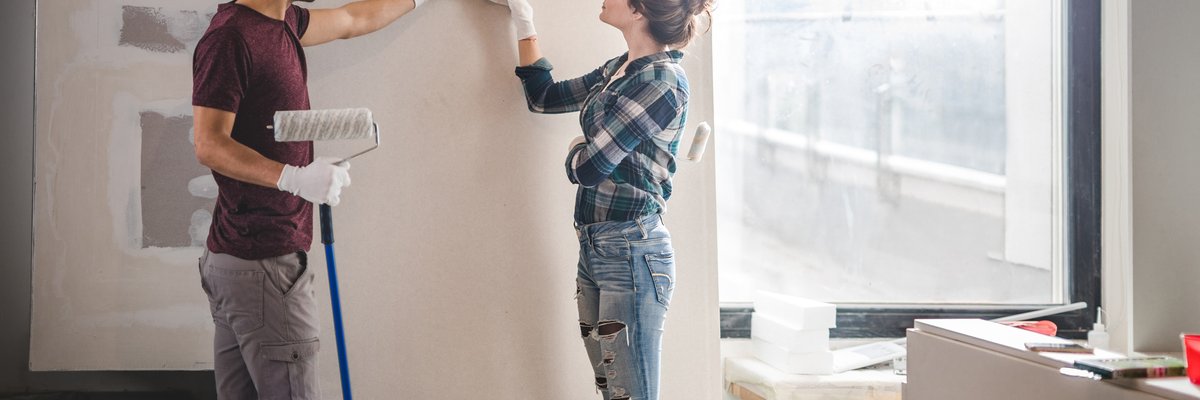Ultimate Guide to Energy Efficient Mortgage Programs
If you are looking for a loan that allows you to live in an energy-efficient home, this may be the program for you.
The typical American household spends more than $2,000 a year on energy bills, according to the energy efficiency experts at ENERGY STAR. Maybe you want to get out from under the high cost of utilities, or want to do your part to help the environment, or perhaps it's or a little of both. Whatever your reason, the Energy Efficient Mortgage program (EEM) may be the ticket.
What is the Energy Efficient Mortgage program?
An EEM (also known as a "green mortgage") helps new home buyers and current homeowners finance the cost of energy-efficient upgrades. EEMs can be used with a new or existing home. It's rolled into a borrower's home purchase or refinanced mortgage. This type of mortgage can also be used to purchase a home that is already energy-efficient.
EEMs are available to conventional, FHA, and VA buyers. Rather than take out two separate loans, an EEM provides additional funds that become part of your mortgage or refinancing. You then use that additional money to make upgrades that will save energy in the long run.
What does EEM cover?
The EEM program covers the cost of permanent energy-efficient improvements, including:
- Furnaces
- Solar heating and cooling systems
- Heat pumps
- Windows and doors
- Clock thermostats
- Water heaters and water heater insulation
- Caulking and weather stripping
- Ceiling, attic, and floor insulation
- Vapor barriers
- Permanent air conditioning units
Because these items are not considered permanent improvements, they are not covered under EEM:
- Window air conditioners
- Appliances
- New roofing
- Vinyl siding
How does EEM work?
Your mortgage lender will require you to have an energy analysis performed by a qualified home energy assessor. This assessor will thoroughly study the property and advise you on the most efficient ways to save energy.
You pick and choose the upgrades that are important to you. The only condition is that each upgrade must be considered "cost-effective." In other words, the expected savings throughout the life of the upgrade must be greater than the total cost.
The home loan amount you qualify for will be "stretched" to pay for those energy-efficient upgrades. Mortgage underwriters realize that you will have extra money each month because you are paying less in utility bills. The logic is that you'll be able to use those funds to afford a larger mortgage.
That means that you may be able to purchase a higher-priced home that is already energy-efficient or put additional money towards the upgrades you want. How much larger your mortgage will be depends on the lender and type of loan. You'll also have a set amount of time to complete the financed upgrades, depending on the type of loan.
Unlike a personal loan (but like any mortgage), your home serves as collateral. The good news is that you do not need to provide additional collateral. The bad news is that your home can be repossessed if you default on the mortgage. If you are approved for a larger-than-expected EEM, make sure that the monthly mortgage payment doesn't stretch your budget too far.
How much can be financed?
The amount of extra money you can qualify for depends on the type of mortgage loan. For example, if you take out an FHA loan, the loan amount can be increased by:
- 5% of the value of the property, up to $8,000
- 115% of the median price of a single-family home in your area, or
- 150% of the conforming Freddie Mac limit for your area
A VA EEM allows you to take out an additional $3,000 to $6,000, depending on expected utility savings. And a conventional EEM is the most generous, allowing you to borrow up to 15% of the home's appraised value.
Does an EEM save money?
An EEM can save you money in three essential ways:
- Monthly utility payments will be lower throughout the years.
- You'll save money by rolling the costs into your mortgage rather than taking out a personal loan because the interest rate on a mortgage is typically lower.
- Unlike a personal loan, the interest on an EEM is tax deductible.
How to get started
If you believe that an EEM is right for you, ask potential mortgage lenders whether they offer an EEM program and rate shop to find the most attractive deal for you. Interest rates have rarely been lower than they are today. Why not take advantage by saving on your mortgage and utility costs?
Our Research Expert
We're firm believers in the Golden Rule, which is why editorial opinions are ours alone and have not been previously reviewed, approved, or endorsed by included advertisers. Motley Fool Money does not cover all offers on the market. Motley Fool Money is 100% owned and operated by The Motley Fool. Our knowledgeable team of personal finance editors and analysts are employed by The Motley Fool and held to the same set of publishing standards and editorial integrity while maintaining professional separation from the analysts and editors on other Motley Fool brands. Terms may apply to offers listed on this page.



